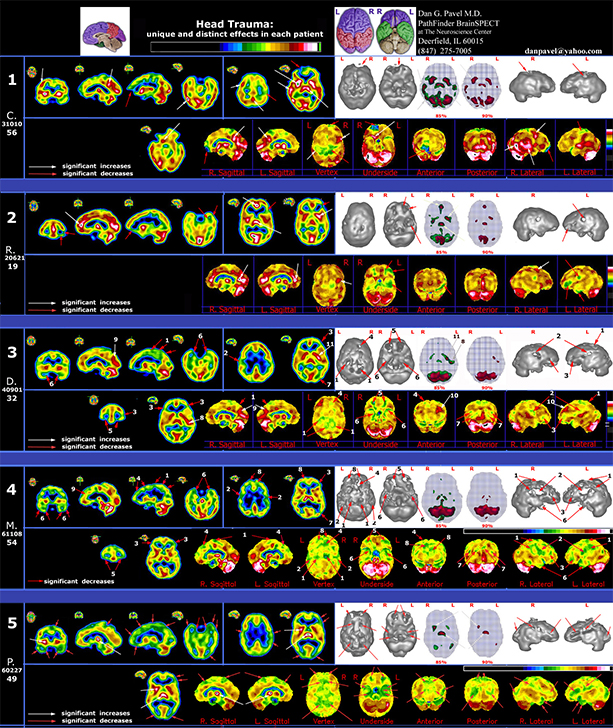Brain SPECT in Traumatic Brain Injury (TBI)
Of interest are the marked differences between individual patients and a great variability in the amount of blood supply (color) to the respective brain structures of each subject. At the same time the high definition of these color displays is what allows the detection of detailed cortical and subcortical features, subsequently included in the report. This results in the type of functional information sought and used by the referring physician to refine the treatment strategy and evaluate prognosis.
The figure below represents a group of patients (ages noted in the left column) with Closed Head Injuries (CHI) of various origins and with coexisting conditions. The latter include cognitive, behavioral, and personality changes leading to inability to perform in the previous line of work/study, or to perform at the same level as before the accident. In the first 2 patients there is evidence of a distinct area of localized decrease (underperfusion), but in the remaining 3 patients the abnormalities are bilateral and wide spread. With the exception of patient #1, the others had normal or inconclusive MRI-s. Of interest is the fact that patients 3, 4 & 5 all were involved in car accidents, but without direct blow to the head, only indirect injuries due to the combined effects of deceleration, shaking, jerking and spinning. The presence of definite abnormalities on Brain SPECT, after a Closed Head Injury, has proven of significant importance for the optimization of treatment strategies and occasionally in the forensic process.
Viewing the functional consequences of traumatic brain injury by using brain SPECT.
D. Pavel, T. Jobe, S. Devore-Best, & all . Brain & Cognition 60 (2006) 211-212 .

